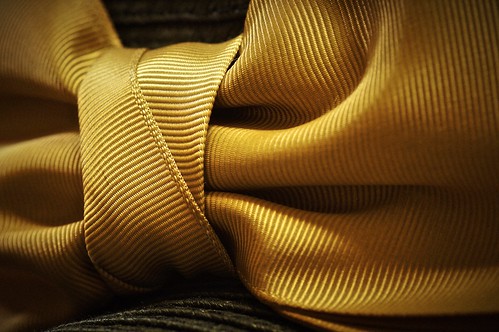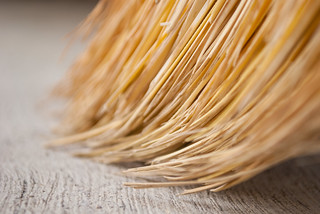 The doctor sat opposite the elderly Jewish lady and her daughter. He had some bad news. The blood drained from the old woman’s face and she began scratching at her head once again. Both women looked desperately tired and worried. It was hardly surprising. A few months previously, Gussie had begun complaining of powerful headaches. Her family had eventually persuaded her to go to the doctor for a check-up but he could find nothing obviously wrong.
The doctor sat opposite the elderly Jewish lady and her daughter. He had some bad news. The blood drained from the old woman’s face and she began scratching at her head once again. Both women looked desperately tired and worried. It was hardly surprising. A few months previously, Gussie had begun complaining of powerful headaches. Her family had eventually persuaded her to go to the doctor for a check-up but he could find nothing obviously wrong.
Soon after, however, Gussie began telling her doctors about ‘a snake crawling and wriggling’ beneath her skull. The descriptions grew increasingly vivid and powerful as she was passed from one specialist to another. The doctors appeared to listen but paid little attention to what this old lady was trying to say. She spoke figuratively rather than factually, as befitted a lady from a different age and culture, so the doctors heard only the words, not the actual meaning behind them.
‘They diagnosed senility,’ says her granddaughter Ellen. ‘Senility comes with old age, after all, and makes people talk nonsense. When she grew more confused and unhappy they recommended electro-convulsive therapy – shock treatment, in other words – and asked my mother to give her approval.
‘It was not until the autopsy was performed that they detected my grandmother’s brain tumour.’
For years afterwards I kept thinking about the doctors’ reactions to my grandmother’s complaints, and about our reactions to the doctors. They went through the motions of diagnosis, but were not open to what they were hearing. They were not creatively exploring the symptoms and potential diagnoses. Mindsets about senility interfered. We did not question the doctors; our mindsets about experts interfered. We were all, in a sense, behaving “mindlessly”.’
Ellen Langer, now a respected psychologist at Harvard University, and her grandmother were victims of everyday ‘mindless’ automatic behaviour. In Gussie’s case, the doctors gathered the facts but failed to take account of the broader context that gave them meaning. So when they ran through the logical thought processes necessary to make a diagnosis they drew the wrong conclusions. The doctors’ minds were hijacked by their autopilot which ensured that they did their jobs unconsciously, without creative insight. They had done their job, but the patient had died.
The experiences of Ellen Langer and her grandmother illustrate what can happen when you try to solve a problem by mindlessly following your normal ‘uncreative’ routines. And such mistakes are hardly unique to medicine. Wherever you look you will find examples of tired, old, habitual routines being used inappropriately to try to solve new problems. They lead to poor design, terrible business decisions, inept government and public administration and even air crashes and industrial accidents.
These things happen because habits are so incredibly seductive. They sneak up on us and guide our minds along comforting old tracks. In a sense, they put a transparent wall between us and the real world, so that we become spectators on our own lives, rather than truly living them. This is the antithesis of creativity. Creativity is, at its heart, about noticing and actively connecting with the world. It’s about putting together disparate facts and concepts and then actively noticing the resulting new ideas and connections. Of course, being creative is hard. So hard, in fact, that we all subconsciously slip into mindless automatic ways of thinking and behaving unless we consciously choose to do otherwise.
My latest book ‘Mindfulness for Creativity: Adapt, Create and Thrive in a Frantic World shows you how to enhance your own creativity and retake control of your life. It will teach you how to sweep away the barriers that are clouding your mind and throttling your creativity. It will help you make better decisions and deal more effectively with problems. The techniques aren’t only used by ‘creatives’, but also by major businesses such as Apple, Google, and Intel. Financiers at J.P. Morgan, HSBC and Deutsche Bank have adopted them to help them make better decisions. Even the US Marines use them. Truth is, we’re all creatives now – whether we want to be or not.
To enhance creativity and problem solving you need to cultivate three skills. Firstly, you need an open but disciplined mind that can gather and then integrate new ideas, concepts and information. This is known as ‘divergent thinking’ and it happens on both the conscious and unconscious levels. Secondly, you need to consciously notice the new ideas created by your mind and to realise their significance (otherwise they will simply pass you by). And thirdly, you need the courage to follow your ideas wherever they should lead – and the resilience to cope with the inevitable attacks and setbacks.
The practices in Mindfulness for Creativity foster all three skills. They are based on ancient traditions dating back at least 2500 years, and were originally developed by the Stoic philosophers of ancient Greece and the early Buddhists. Over the centuries they have been adapted to suit the times, but the core principles have always remained intact. The state of mind they cultivate is known as ‘mindfulness’, but it has also been called ‘awakening’, ‘presence’ or simply ‘awareness’. Mindfulness is a state of calm, open-hearted, non-judgmental awareness. It’s a state of mind where you are paying full attention to whatever is happening in the present moment, rather than living in the past or worrying about the future. Although it is traditionally developed through mindfulness meditation, other, less formal practices can also be used. Mindfulness for Creativity teaches both.
In recent years, scientists have discovered that practising certain forms of mindfulness meditation for ten to twenty minutes a day can enhance creativity, problem solving and decision making. They also dissolve anxiety, stress and depression, while enhancing happiness, wellbeing and resilience. A typical ten-minute meditation consists of focusing your attention on the sensations the breath makes as it flows into and out of the body. This creates a calm mental space from which you can observe all of your thoughts, feelings and emotions as they bubble up from your deep subconscious. It allows you to watch as they appear in your mind, linger for a while and then dissolve. In effect, your mind becomes less frantic and ‘noisy’ and this, in turn, means you can notice your quieter thoughts and ideas. So it helps foster great clarity of thought. In this way, mindfulness smoothes the path of ideas as they arise from the deepest reaches of your mind. This enhances divergent thinking – the purest form of creativity – and the type that most of us would recognise as ‘creativity’ itself. Divergent thinking is the most mysterious state of mind because it appears to conjure up ideas from nowhere – often out of the blue, and frequently without bidding. It’s the form of awareness that gave rise to Archimedes’ ‘Eureka’ moment, Isaac Newton’s insights into gravity, Einstein’s Special Theory of Relativity and many great novels, such as Dr Jekyll and Mr Hyde. In short, it’s the state of awareness that allows you to spontaneously ‘see’ the solution to a problem, to conjure up new ideas and to create a work of art or design with true insight and flair.
DIVERGENCE . . .
Mindfulness enhances such divergent thinking on another level too. It progressively dissolves the mental habits that force us to think along the same tired, old lines over and over again. These habits exert immense control over our lives, but we are largely unaware of their influence. In fact, scientists estimate that around 45 per cent of the choices and decisions we make each day are governed by habit. Such habits have their uses, but they are very much a double-edged sword. On the one hand, they allow the mind to outsource routine matters to its ‘autopilot’, so that we can focus on the more important things. On the other hand, they can lock in place the ways in which we approach the world and think about ideas and problems. In short, they can stifle creativity.
And here’s the rub: because habits allow you to outsource certain forms of thinking to your autopilot, often without you realising it, thinking itself can become increasingly habitual. Certain thoughts can become habits in themselves. Negative, self-defeating thought patterns are particularly habitual. Ones such as Why can’t I do this?, What’s wrong with me today? or He’s got it in for me can turn into mental soundbites that the autopilot throws into your mind just as easily as it helps you brush your teeth or find your way to work. The same is true for countless other thought patterns too.
 The way that we tackle problems at work and at home is often governed by thought patterns laid down many years before. They originally served a purpose, but do they still? Technology may allow us to tackle problems in new ways, but do our patterns of thought and behaviour? Circumstances may change, but our patterns of thought and behaviour often do not. This is why it is so easy – and so seductive – to think along the same tired, old, familiar lines and to make the same decisions over and over again. In this way, habitual thought patterns can progressively narrow the mind and ensure that we consciously think less and less, while ceding more and more control to our mental autopilot.
The way that we tackle problems at work and at home is often governed by thought patterns laid down many years before. They originally served a purpose, but do they still? Technology may allow us to tackle problems in new ways, but do our patterns of thought and behaviour? Circumstances may change, but our patterns of thought and behaviour often do not. This is why it is so easy – and so seductive – to think along the same tired, old, familiar lines and to make the same decisions over and over again. In this way, habitual thought patterns can progressively narrow the mind and ensure that we consciously think less and less, while ceding more and more control to our mental autopilot.
This is why around half of the choices and decisions we all make each day are governed by habit. If this figure seems a little high, cast an eye over your own life: do you always sleep on the same side of the bed? Have sex on the same nights of the week (and in the same positions)? Do you wake up at the same time each day? Always take the same number of footsteps to the bus stop, station or car? Take the same route to work? And when you’re there, do you always sit in the same chair at meetings, drink out of your ‘favourite’ cup and have the same polite conversations with the same people?
When it comes to approaching problems, habitual ways of thinking can make it very difficult to create innovative solutions or to spark a chain of new or original ideas. But there is an alternative. Habits aren’t destiny (unless you allow them to be). You can progressively disentangle yourself from the web of habits that controls your life by using the meditations Mindfulness for Creativity. And when you do so, you’ll find it increasingly easy to think clearly, spot new ideas and adapt to changing circumstances. In the long run, this will allow you to consciously ‘jump the tracks’ into more fruitful ways of thinking.
RESILIENCE . . .
It is not enough to think clearly and to produce original ideas. You also need the courage to follow them wherever they should lead and the resilience to withstand failure, hardship and cynicism. The scientific evidence is clear: mindfulness helps build such courage and resilience. It does this by encouraging the mind’s harsh ‘inner critic’ to fall silent for a while. Your inner voice is an essential part of your identity, but if it becomes too dominant, then it can stifle free-flowing creativity and experimentation. Left unchecked, your mind can start baiting itself with such bitter and angry thoughts as, This is pointless. I’m just not up to it any more . . . I can’t come up with anything new at all. Why can’t I just make a decision and get on with it? Your inner critic can all too easily consume all of your energy, leaving behind a burnt-out shell. You can start to become paralysed with indecision and even the smallest of problems can seem insurmountable. This not only further erodes creativity, but left unchecked it can lead to anxiety, stress, depression and exhaustion.
But it doesn’t have to be this way. Your inner voice is not always correct. The mind’s running commentary on the world should not be mistaken for the mind itself. In short, thoughts are not always facts (even those that claim to be). Simply understanding how this aspect of your mind works can reinvigorate creativity and grant you the courage to experiment, to make decisions and to risk failure in pursuit of your goals.
 Such courage, especially in the face of failure, is essential. After all, you simply cannot create something new or make a difficult decision without risking failure – and taking such risks requires great courage. Creativity, problem solving and effective decision making all require a special type of quiet, persistent courage. It’s not the flavour of courage that is bold or arrogant. It’s far more subtle than that. It’s the type that you feel when you are standing on solid ground; when you have a sense of wholeness, certainty and strength; of trusting that there is a path to your goal, even though it might not be obvious at the time. Mindfulness cultivates such courage by broadening your mental horizons so that everything falls naturally into perspective. It’s as if you can see the world for miles around and all of your fears, worries and problems simply dissolve. You come to understand that most problems, no matter how difficult they might at first appear, are often akin to bumps in the road, rather than life-and-death scenarios. This, in turn, fosters the courage necessary to create new ideas and follow them wherever they should lead.
Such courage, especially in the face of failure, is essential. After all, you simply cannot create something new or make a difficult decision without risking failure – and taking such risks requires great courage. Creativity, problem solving and effective decision making all require a special type of quiet, persistent courage. It’s not the flavour of courage that is bold or arrogant. It’s far more subtle than that. It’s the type that you feel when you are standing on solid ground; when you have a sense of wholeness, certainty and strength; of trusting that there is a path to your goal, even though it might not be obvious at the time. Mindfulness cultivates such courage by broadening your mental horizons so that everything falls naturally into perspective. It’s as if you can see the world for miles around and all of your fears, worries and problems simply dissolve. You come to understand that most problems, no matter how difficult they might at first appear, are often akin to bumps in the road, rather than life-and-death scenarios. This, in turn, fosters the courage necessary to create new ideas and follow them wherever they should lead.
FREE THINKING . . .
Mindfulness for Creativity operates on two levels. Firstly, there is the four-week meditation programme, which takes around ten to twenty minutes a day. This clears the mind and allows innovative ideas to take form and crystallise. It also soothes the mind and dissolves stress. This, in turn, allows the mind to work more effectively, so that you can begin to solve problems faster and more intuitively. Mindfulness also helps decision making by dissolving anxiety, stress, frustration and depression. Even if you have none of these problems, you will still find yourself feeling happier, sleeping better and becoming fully engaged with life once again.
Secondly, mindfulness creates a mental vantage point from which you can observe just how much of your life is controlled by habitual ways of thinking and approaching the world. Such renewed clarity will help you tackle the habits that constrain creativity and effective problem solving. Habit breaking (or habit releasing) is as simple as taking a different route to work or spending a little time walking around the park soaking up the sights, sounds and smells. Or it might mean listening to your favourite music with fresh ears or drinking a cup of tea or coffee with your eyes closed. Such simple things broaden awareness, spark curiosity and open the doors to serendipity……
Dr Danny Penman is co-author with Professor Mark Williams of the international bestseller: ‘Mindfulness: A Practical Guide to Finding Peace in a Frantic World’. ‘Mindfulness for Creativity: Adapt, Create and Thrive in a Frantic World’ is published by Piatkus.
Learn more and download free meditations from http://franticworld.com/
You can buy Mindfulnes for Creativity from Amazon UK here:
Latest posts by Admin (see all)
- The Necessity of Mindfulness: Seeing Things as They Really Are - October 6, 2021
- How Mindfulness Saved My Life - August 8, 2021
- Mindfulness: A Bird’s-Eye View - July 11, 2021
